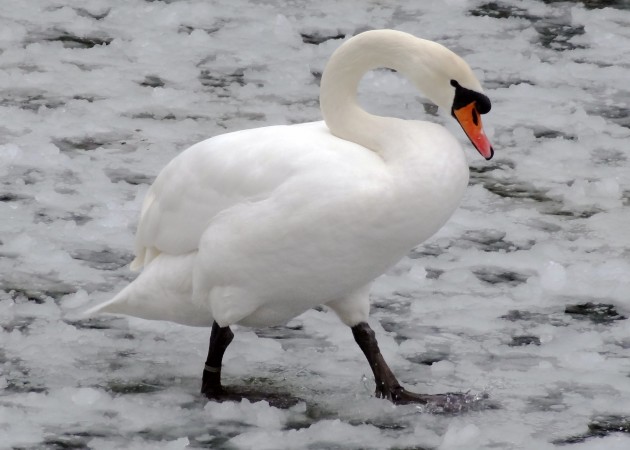Keeping warm in winter is for the birds
You watch the weather forecast, gear up with hat, coat, scarf and gloves, but you still get cold after just a short time in the snow and wind. If it’s such a challenge for humans to stay warm outside, how do birds―especially the little delicate guys like chickadees and titmice―survive the single-digit temperatures and whipping winds of winter? It turns out that birds (even the little guys) aren’t so delicate after all, and they’ve got a few tricks up their sleeve (uh, wing), too. Their first layer of defense against the cold is their outer-most one: feathers. There’s a good reason why people love down-filled winter coats―feathers are fantastic insulation. “Feathers are incredibly specialized structures that serve many purposes including, for many species, keeping them warm,” says Peter Marra, head of the Smithsonian Migratory Bird Center at the National Zoo.

“Birds’ feathers provide remarkable insulation against the cold, and the oil that coats feathers also provides waterproofing, which is important since the only thing worse than being cold, is being cold and wet,” Marra says. And just like the coats people wear, birds tend to get puffier in winter. “A bird’s body heat warms the air between its feathers,” Marra explains. “So birds fluff up in the cold to trap as much air in their feathers as possible. The more trapped air, the warmer the bird.” So feathers are great for the parts of a bird that have feathers, but what about a bird’s legs and feet? It’s not like birds have pockets they can stick them into…or do they? One way birds keep their legs and feet warm is to stand on one leg, while the other is tucked up warmly in its feathers. And then they switch to give the other leg a turn.

Have you ever wondered why the legs of ducks and geese don’t freeze in the frigid waters of winter? Marra says birds have an extremely efficient way of keeping their legs warm: “They have a counter-current heat exchange system in their legs: Veins and arteries in the leg are close to each other, and as warm blood leaves the body, it heats up the cold blood returning to the body. It’s brilliant!” Many species of birds flock in winter to keep lots of eyes out for predators and look for hard-to-find food. Some birds also flock in a ball at night to stave off winter’s chill. “Many small birds, like black-capped chickadees, Eastern bluebirds, and house wrens, will gather in large groups at night and crowd together in a small, tight space to share body heat,” Marra says. “They can roost closely together in dense shrubbery or trees. And even empty birdhouses and tree cavities are popular places to gather together to conserve heat.” So….wear a good coat, preferably of down; always make sure to keep your extremities warm; and stay social in the darker winter months―all advice we’ve probably heard at one time or another, but now we know the source.

